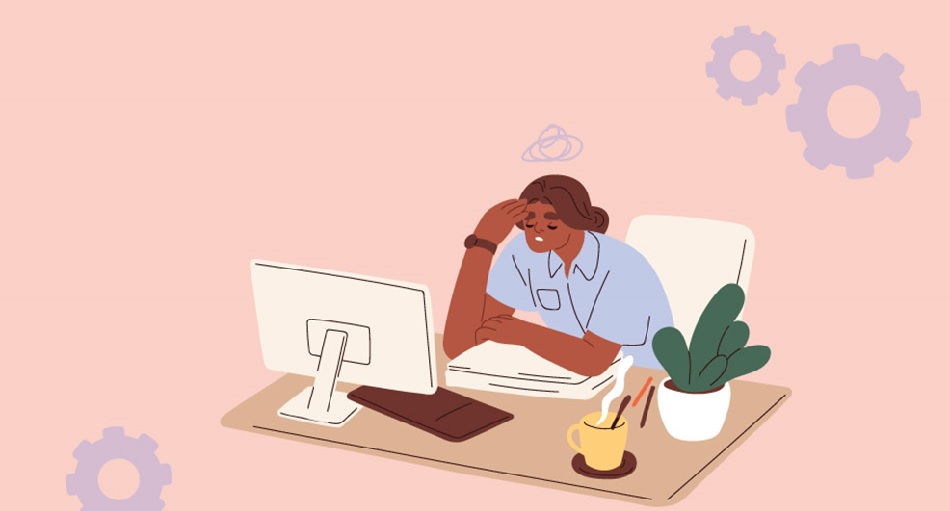Dipak Kurmi
The theme for Mental Health Day 2024, observed on October 10, was “mental health in the workplace.” Though the day has passed, the relevance of this theme transcends the calendar, demanding persistent attention. The professional sphere is increasingly characterized by burnouts and emotional collapses, signaling a deeper, systemic issue. In the relentless pursuit of success, we are not only fragmenting as families and societies but also as individuals and workers. Our workplaces, intended as spaces of productivity and collaboration, have turned into high-stress environments, teeming with unspoken fears and pressures.
Deadlines have morphed into “death lines,” and the quest for efficiency often sacrifices humanity at the altar of ambition. Having personally navigated the turbulent waters of mental illness while trying to maintain professional excellence—and facing professional dismissal despite my efforts—I can attest to the pervasive gap between rhetoric and action when it comes to mental health in the workplace. Conversations about workplace wellness and mental health, while increasingly prevalent, often fail to materialize into tangible support systems. The toxicity that permeates many organizations, whether it manifests as hostility, unchecked competition, or insidious office politics, creates an atmosphere where mental well-being is sidelined.
Employees frequently struggle to define boundaries or voice their concerns without the looming threat of judgment or professional repercussions. This communication void festers into a corrosive work culture where mental health is overshadowed by metrics of productivity and ambition. If workplaces are to evolve into environments that genuinely prioritize mental well-being, a foundational shift is required—one that embeds empathy, resilience, and open dialogue into the organizational fabric.
The Case for a Chief Emotional Intelligence Officer
To bridge this chasm between dialogue and action, every organization should consider appointing a Chief Emotional Intelligence Officer (CEIO). This dedicated professional would be responsible for fostering emotional wellness, acting as a confidant and mediator for employees grappling with mental health challenges. The role of a CEIO transcends that of an HR manager or traditional workplace counselor—it involves creating a culture where emotional intelligence becomes a core competency across all levels of the organization.
A CEIO would be pivotal in providing emotional guidance, ensuring employees have a safe, non-judgmental space to discuss their struggles. They could lead workshops on emotional intelligence, resilience, and conflict resolution, equipping employees with the tools to navigate the complex emotional landscapes of their roles. Furthermore, they could oversee peer-support networks, mediate workplace disputes, and promote policies that balance productivity with well-being.
Why is this role so critical? Mental health challenges in the workplace rarely occur in isolation; they are deeply embedded in interpersonal dynamics, organizational structures, and the pressure-cooker environment that many workplaces unintentionally cultivate. A CEIO would act as both a proactive educator and a responsive resource, helping to dismantle stigmas surrounding mental health while cultivating a culture of trust and empathy.
The Quiet Crisis
Consider the quiet suffering of countless employees: individuals battling anxiety who are too fearful to speak up during meetings, those struggling with depression who find it difficult to meet deadlines, or those enduring chronic stress fueled by office politics. These struggles, often hidden, have ripple effects that extend beyond the individual. They disrupt team cohesion, erode productivity, and contribute to high attrition rates.
In workplaces where mental health issues are neglected or stigmatized, these silent battles fester, leading to both personal and organizational costs. The absence of visible support mechanisms exacerbates feelings of isolation and hopelessness among employees, perpetuating a vicious cycle of stress and disengagement.
Bringing Mental Health Resources In-House
To counter this, organizations must integrate mental health resources directly into their ecosystems. By doing so, they send a powerful message: employees are valued as holistic individuals, not merely as contributors to the bottom line. The presence of an in-house psychologist or therapist, for instance, would provide a crucial outlet for employees to address their concerns in a professional and confidential setting.
Such resources could normalize seeking help, shifting perceptions of mental health from a taboo topic to an integral part of workplace wellness. A CEIO, leading by example, could foster a culture where asking for support is seen as a strength, not a weakness. Whether it’s an overwhelmed employee needing a listening ear or tensions between colleagues requiring mediation, a CEIO could offer solutions that are both empathetic and effective.
Beyond Quick Fixes
Addressing mental health in the workplace is not about offering token gestures or quick fixes. It requires a sustained commitment to building a nurturing, inclusive culture that prioritizes emotional well-being. This involves rethinking organizational practices, from workload distribution to conflict resolution, and embedding mental health into the core values of the company.
Workshops, peer-support networks, and open-door policies for mental health discussions are just the beginning. The ultimate goal is to create an environment where employees feel empowered to bring their whole selves to work without fear of judgment. This transformation demands action, accountability, and a willingness to prioritize long-term wellness over short-term metrics.
A Call to Action
The need for actionable steps to address workplace mental health has never been more urgent. Employers must recognize that a mentally healthy workforce is not just a moral imperative but a strategic advantage. By investing in resources like a CEIO and integrating mental health support into the organizational framework, companies can foster environments that are not only more productive but also more humane.
If the workplace is to become a space of growth and collaboration rather than stress and alienation, it is time to move beyond well-meaning words and embrace tangible change. Mental health in the workplace is not a fleeting concern—it is a foundational issue that demands our sustained attention and action.
(the writer can be reached at dipakkurmiglpltd@gmail.com)




